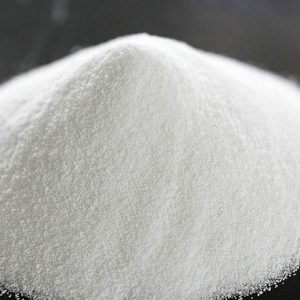Specification
| NO | ITEM | Extrusion grade J-700 |
| 1 | Content of chlorine % (≥) | 63~69 |
| 2 | Appearance | White powder |
| 3 | Volatile matter content % (≤) | 0.4 + |
| 4 | 30 mesh sieving rate % (≥) | 99 |
| 5 | Thermal decomposition temperature °C (≥) | 110 |
| 6 | Density (g/cm³) | 1.45-1.58 |
| 7 | Tensiles strength (Mpa) | 54-70 |
| 8 | Bending strength (Mpa) | 120 |
| 9 | Linear expansion coefficient (K-1) | (7.5-8.0)*10-5 |
| 10 | Screenings(0.6mm) (≤) % | 1 |
Advantage
- Strong and High Temperature Resistance
- Easy installation
- Oxygen-free corrosion
- Reducing the Infiltration of Auxiliaries
- Not affected by chlorine in water
- Good flame retardancy
- CPVC has excellent chemical impedance to non-extremely strong acids and alkalis.
- Low thermal conductivity
- Bacteria are not easy to reproduce
- Lower thermal expansion
Detail Application
Pipe/sheet: CPVC is mainly used to produce pipes, convey hot water and corrosive media. It can maintain high strength at less than 100 C, and can be used for a long time under high internal pressure. The weight of CPVC is 1/6 of brass and 1/5 of steel, and it has very low thermal conductivity. Therefore, the pipeline made of CPVC has light weight, good thermal insulation and no need of thermal insulation. CPVC pipes can be used as hot sewage pipes, plating solution pipes, thermochemical reagent pipes and wet chlorine pipes in chlor-alkali plants. In addition, it is mainly used to produce CPVC casing for buried high-voltage and ultra-high-voltage power transmission cables, pipes and fittings for hot and cold water, pipes for places with strict fire protection requirements, pipelines for oil gathering and transportation in oilfields and various CPVC corrugated plates, corrugated plates and synthetic resin corrugates. 2. Injection parts: CPVC resin can produce water supply pipe fittings, filter materials, dehydrators, etc. It can also produce electrical and electronic parts. Such as wire groove, conductor protective layer, electrical switch, fuse protective cover, cable insulation material, etc. 3. Calendered sheet: It can be used to manufacture chemical and corrosion-resistant chemical equipment, such as reactors, valves, electrolyzers, etc. 4. Composites: CPVC composites composed of CPVC and some inorganic or organic fibers have good impact resistance and heat resistance, which are better than those of other resins. They can be made into sheets, pipes, corrugated plates, profiles, etc. 5. Modification of polyvinyl chloride fibers: The washing temperature of domestic polyvinyl chloride fibers should not exceed 60 C. Adding 30% CPV in the spinning of polyvinyl chloride fibers can greatly improve the heat resistance of products and reduce shrinkage. 6. Foaming material: The heat resistance of CPVC foaming material is better than that of PVC foaming material. The shrinkage rate at high temperature is quite small, and it can be used as thermal insulation material for hot water pipes and steam pipes. When CPVC is foamed in the solvent that can produce gas when heated, uniform and microporous foaming gas can be obtained, and hydrocarbons, ethers and aldehydes with boiling point of 50-160 (?) C can be used as foaming agent. 7. The blending of CPVC with thermoplastic or thermosetting plastics can significantly improve the mechanical and physical properties of these materials, such as heat resistance and flame retardancy of products. 8. Used as man-made fibers. CPVC can be used as fishing net, work clothes, industrial filter cloth, non-burning parachute and submarine cable jacket after wire drawing. 9. CPVC with higher impact resistance and better transparency is prepared through the improvement of production technology. This transparent material can be used in automobiles, CD-ROMs and audio-visual products. 10. CPVC/PVC alloy can use injection, extrusion, calendering and pressing methods to manufacture moulding sheets, pallets, fan covers, electrical parts and shells, commercial machine shells, pipes, communication equipment and automotive parts, etc.
Application
1.Hot and cold water pipe,fitting.
2.Fire fighting pipe,fitting,sprinkler.
3.Temperature,corrosion—resisitant chemical pipe fitting.
4.Underground high-voltage power cable with CPVC pipe
5.Crude oil gathering and transportation pipe
6.Modifier improving functional materials high temperature &corrosion resistance
7.Foam Material.


